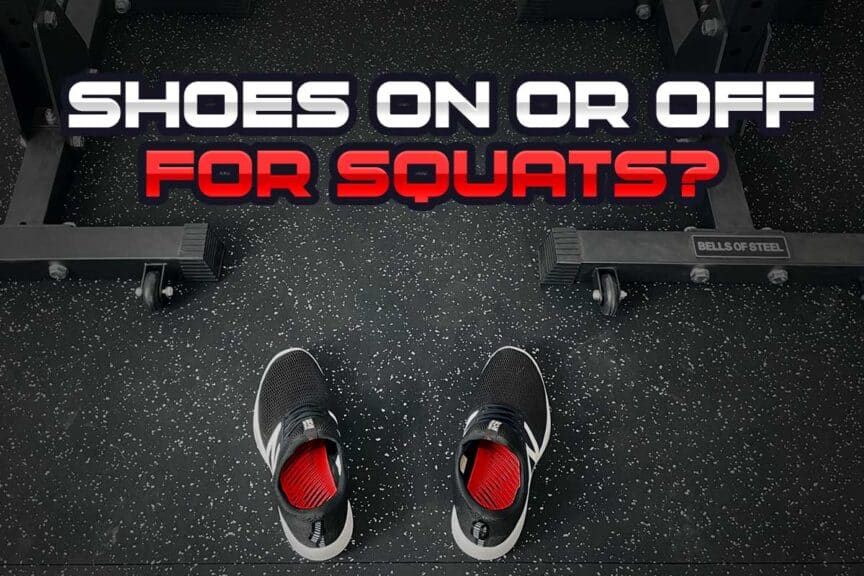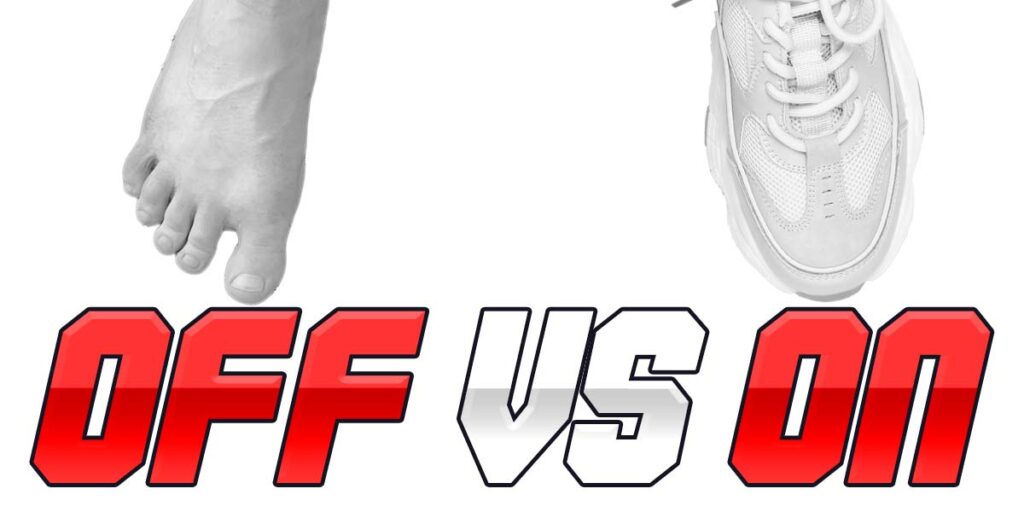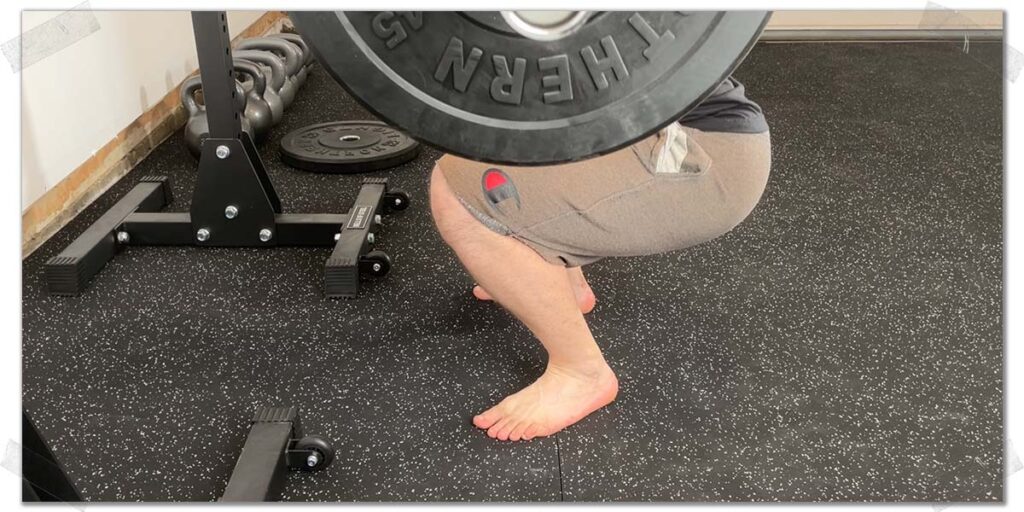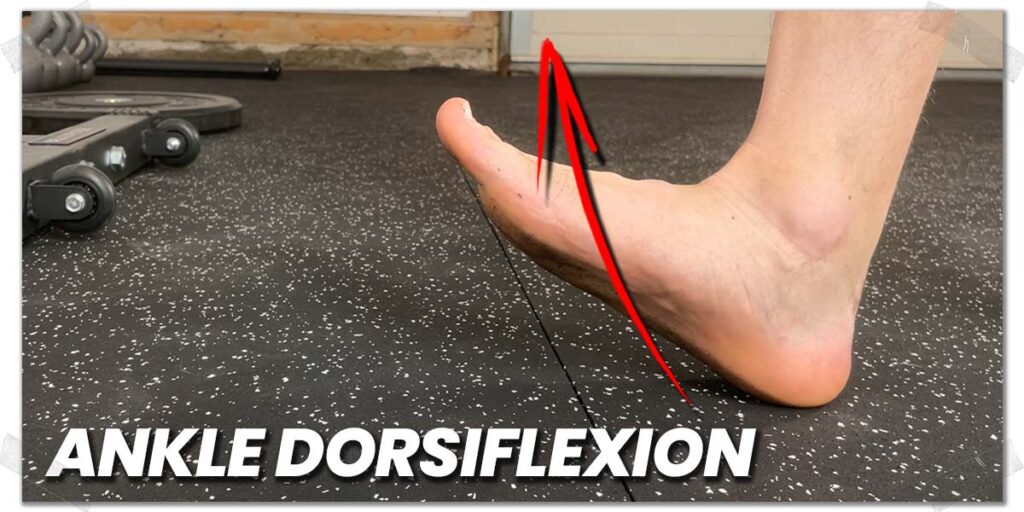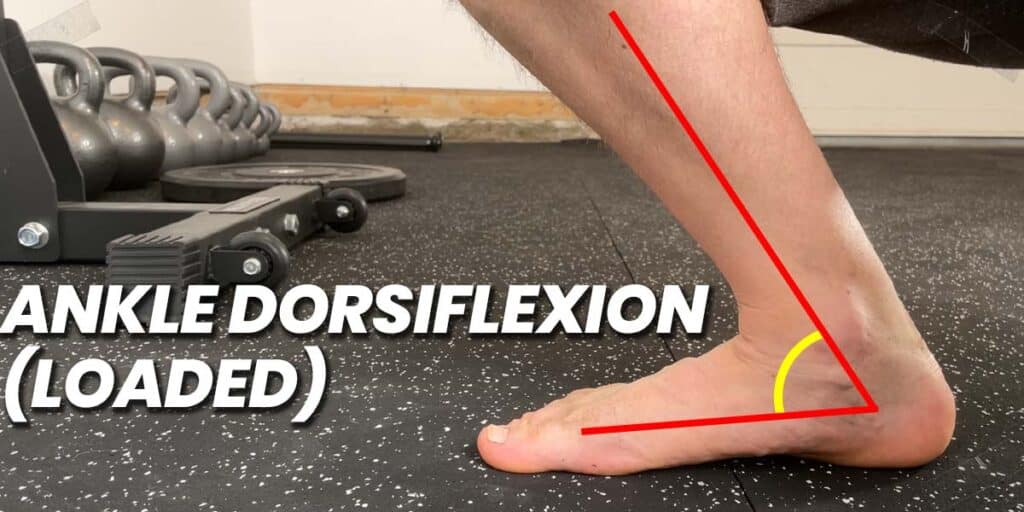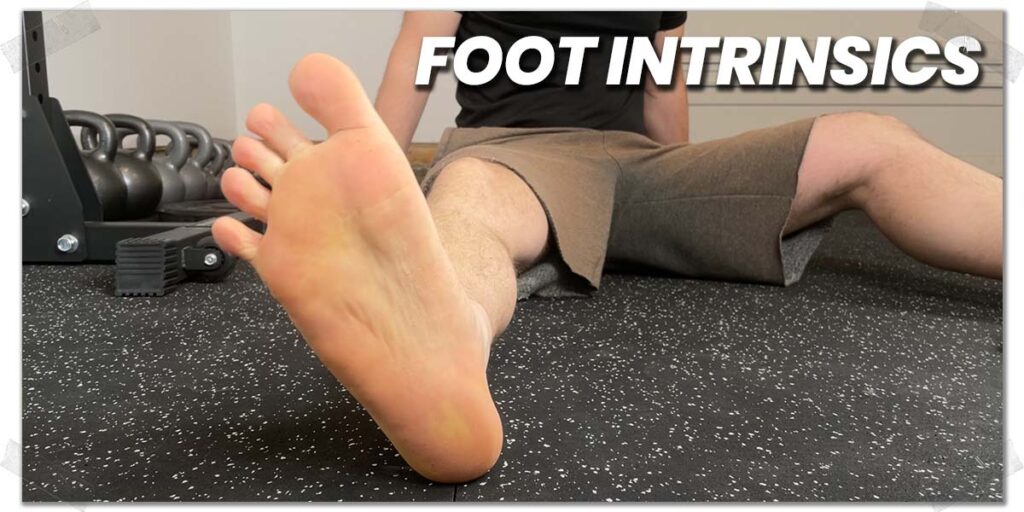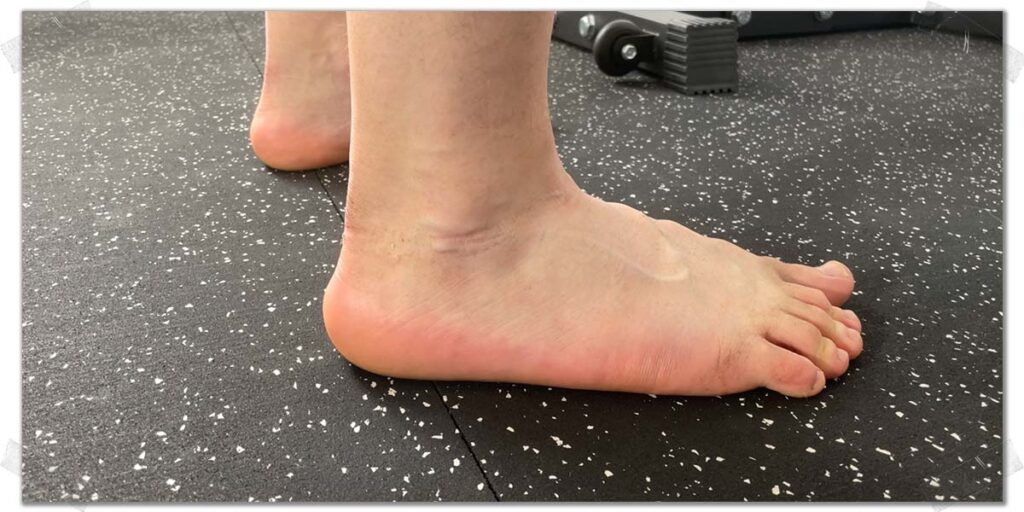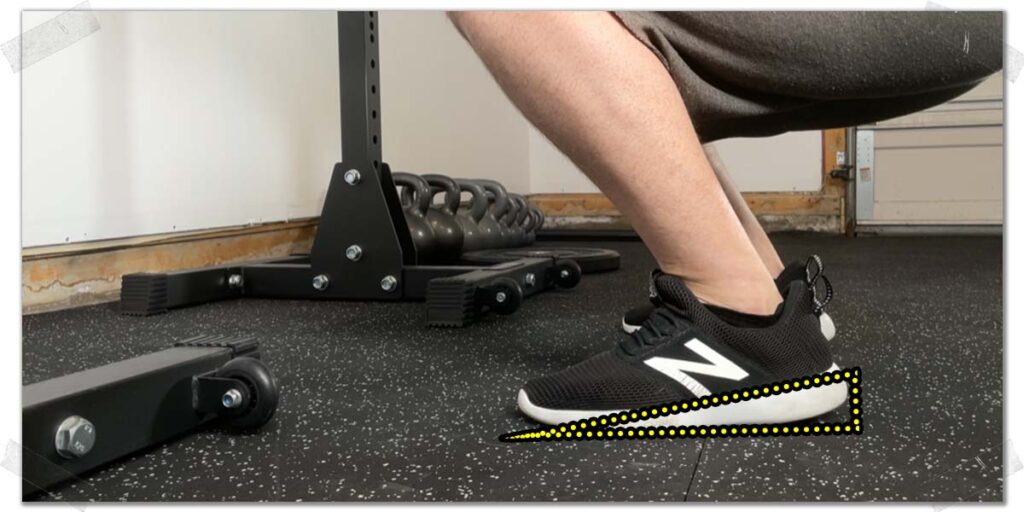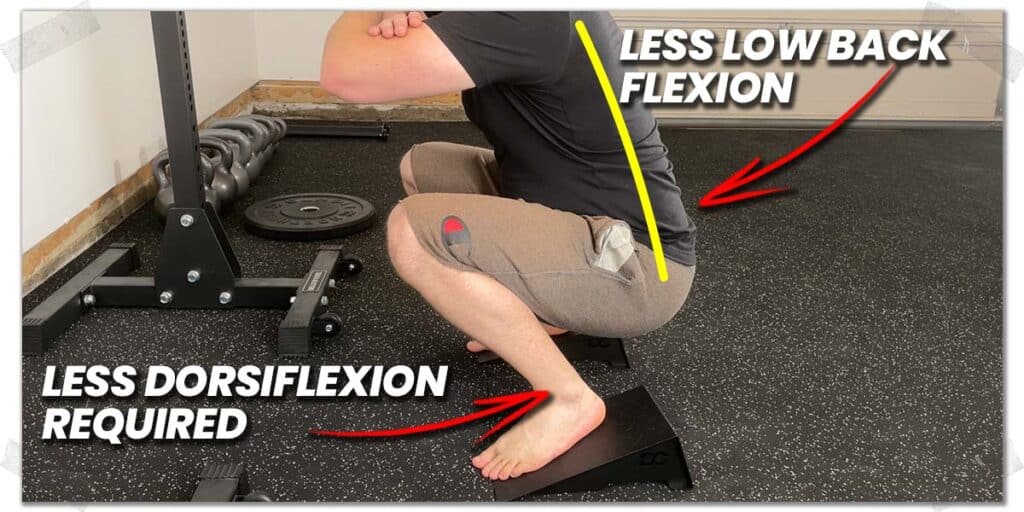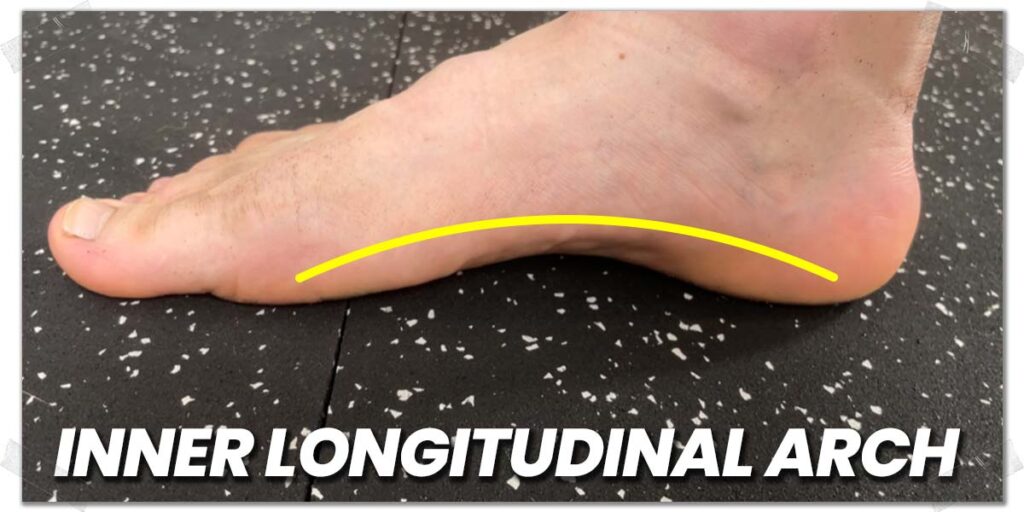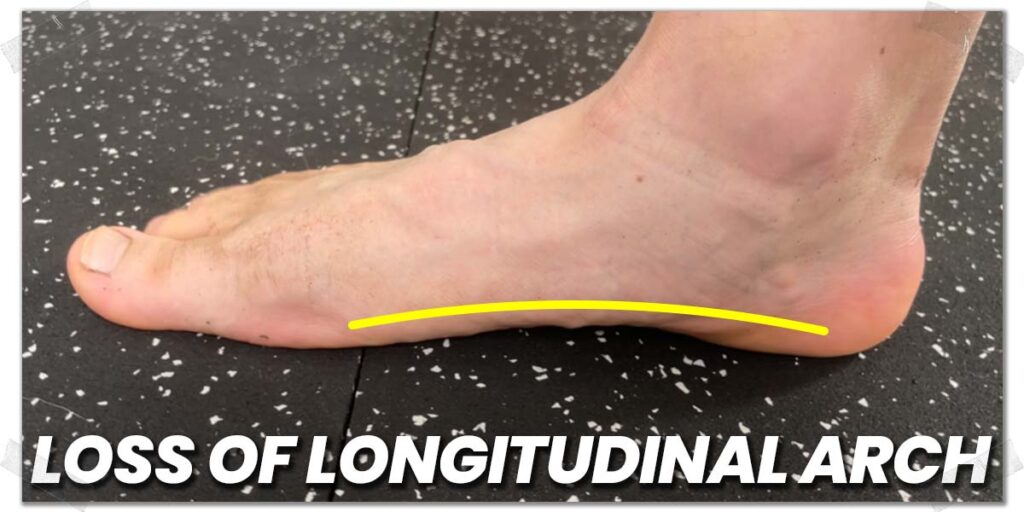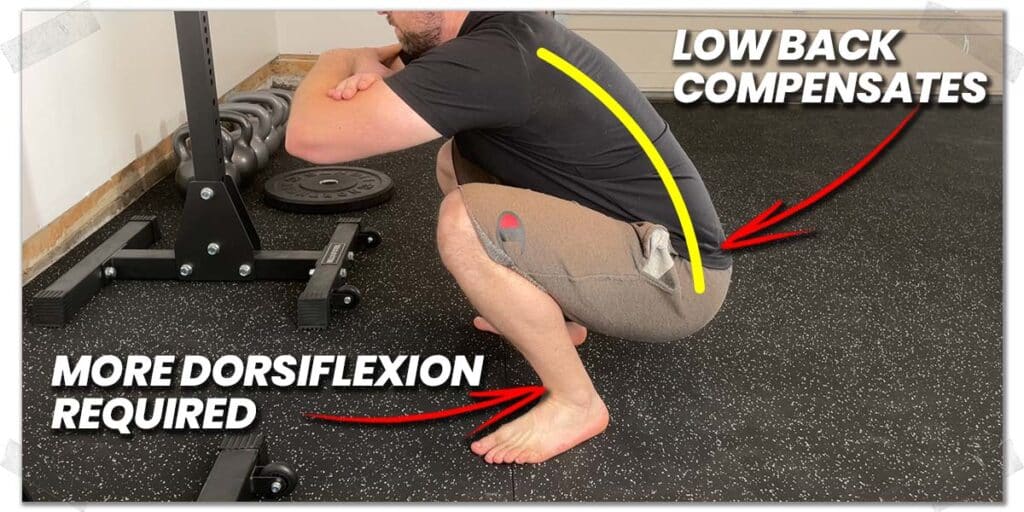Sometimes squatting barefooted could be one of the smartest possible training moves you could ever make. Other times it could be just the opposite. The only thing better than squatting itself is squatting while knowing that the type of squats you’re doing are optimized to give you the results you’re after.
Barefoot squatting is ideal for improving foot intrinsics, lower body mobility, maximizing force transfer, and enhancing proprioception but should likely be avoided for near-maximal or maximal lifts, when you have certain foot issues, or are squatting on less-than-ideal surfaces.
Knowing when to ditch the shoes or keep them on really does matter since barefooted or non-barefooted squatting each has unique benefits and drawbacks, all of which depend on your needs or training goals. As with many other things in life, there’s no universal “good” or “bad”; rather, it’s all about knowing what you want to achieve with your squats.
And so, in this article, I’ll give you some seriously important details to consider for whether you should ditch the shoes or keep them on.
Related content:
To be perfectly clear: you’re still going to reap outstanding rewards, regardless of whether you squat with shoes off or on. The big picture is that squats will bring all sorts of physical benefits your way, but we’re focusing on the smaller picture here; there can be some sweet little extra benefits that can act as the “cherry on the top” based on which version of squatting (barefooted or non) is best for you.
Does the type of squat matter?
The information that follows applies to any type of squat. It can be a barbell back squat, front squat, goblet squat, Zercher squat, etc. The principles are essentially the same for each one.
Regardless of squat type, it’s worth noting, though, as a rather general rule, you’ll likely find the trend that the heavier your squats become, the more likely you’ll want to opt to keep your shoes on. However, that may not always be the case. Keep reading to find out why!
Benefits of squatting barefooted
Your feet are amazingly complex and intricate structures. Each of your feet has 26 bones and 33 joints, and even more muscles! If that’s not enough, your feet are packed with an exceptionally high number of sensory nerve endings, allowing your brain to receive a plethora of sensory information (this plays heavily into the benefit of improving proprioception, discussed below).
As a result, squatting barefooted can hold numerous benefits for maintaining — and often improving — the strength of the muscles of your feet, how the joints move, and the foot’s ability to communicate with your brain by providing accurate sensory information.
Let’s look at each of these benefits in more detail.
Improving ankle & full-body mobility
Squatting barefoot requires your ankle (the talocrural joint, in particular) to undergo a more extensive range of motion (a specific type of ankle movement called dorsiflexion) than when squatting while wearing shoes. This is especially true when squatting in shoes with a higher heel (you’ll learn more about this below). But it doesn’t stop there; everything in the body is connected, and barefooted squatting can even improve mobility in your lower and upper body. Let’s look at each of these below.
Ankle mobility
Ankle dorsiflexion (the movement of pulling your ankle up towards your face) can often be restricted, which can seriously mess with your squats. There are times when you can work around this by wearing lifting shoes (discussed later), but the end goal should be challenging your mobility so that it is improved and ultimately restored.
Related article: Four Handy Exercises to Help Loosen Stiff Ankles in All Directions
Barefooted squatting can be an effective way to improve your ankle mobility by repeatedly challenging its range of motion with each repetition you perform. You’ll need to be mindful of avoiding squatting too deep (which can compromise the health of your lower spine), but so long as you avoid the dreaded butt-wink, your ankles will be exposed to a greater range of motion than they otherwise would if wearing shoes.
Full-body mobility
If your ankle mobility is lousy, your body will be forced to compensate elsewhere to compensate for the deficiency. Essentially, if your ankle moves less, another area will need to move more. This can absolutely be used to your advantage if you know how to do so appropriately.
If you find that barefoot squatting challenges the mobility (i.e. makes it a bit more difficult) to hold your torso upright or drop deeper into your squat (without rounding your lower back). You’ll likely improve the mobility of these respective areas (provided you keep perfect form on every repetition you perform).
Remember: The positioning of the lower back should never be compromised during a squat (it can lead to nasty pain and injuries). Always keep it in a flat position (which is a strong position). This will force more mobility into your hips.
Improving foot intrinsics
There’s evidence to show that proprioception around the foot and ankle are enhanced when the skin is in direct contact with the floor, or at least when wearing minimalist footwear.1–3
Intrinsic muscles of the foot refer to the smaller (and lesser known muscles) that work to provide fine-tuned movement and control of the toes and the rest of the foot. We often don’t think about these muscles all that much, however, they’re rather important for overall foot health and function.
Many individuals argue that the intrinsic muscles of the feet become weak and dysfunctional with prolonged shoe-wearing. Most individuals in the northern hemisphere don’t walk around barefoot regularly or for long durations of time. As such, the belief is that the foot’s intrinsic muscles can become weak since we don’t need to rely on gripping the ground with our feet.
Combine this with keeping your toes crammed into narrow-fitting shoes all day long and one can easily make the case of intrinsic weakness occurring from toes not moving all that much and from not having to continually grip the floor when walking, standing, and exercising.
As such, the belief is that squatting (and exercising in general) can work to improve and strengthen the intrinsic muscles of the foot. Without a rubber sole to grip the floor beneath you, your toes and subsequent muscles will now need to contract and move around in ways that help grip the floor and accommodate to what’s beneath them.
For these reasons, squatting barefoot can be seen as helpful for improving foot function and intrinsic abilities. And it makes good sense: your body will continually be working to achieve stability throughout each repetition of the squat, and your stability is rooted through the interaction of your toes and feet with the flooring beneath you.
Improving proprioception of the foot
Proprioception refers to the ability of your brain to determine the positioning, location, and forces that specific body parts are experiencing. It results from your nervous system and muscles providing feedback to your brain about these particular phenomena.
Proprioception helps provide the brain with information on:
- Sensation of joint and limb positioning
- Sensation of movement taking place
- Sensation of force
- Sensation in changes of velocity
There’s evidence to show that proprioception around the foot and ankle are enhanced when the skin is in direct contact with the floor, or at least when wearing minimalist footwear.1–3
Maximizing force transfer
For every action, there is an equal and opposite reaction. Remember that one?
When squatting with heavy loads, a barefoot approach will maximize your ability to transfer force upwards. If you have a cushioned surface between the ground and your heel (such as when wearing a tennis shoe), your body will lose a bit of upwards force transfer by sinking into the cushioned surface when rising out of the squat.
It’s analogous to comparing how high you could jump when jumping off a concrete floor and jumping off soft, soggy, muddy ground; you won’t transfer force nearly as effectively.
Pro tip: If you want to maximize force transfer while still wearing shoes, opt for wearing dedicated lifting shoes, which have zero cushioning for the insole.
When to squat barefoot
As you can likely guess, it can be wise to squat barefoot if you need any of the benefits listed above, but let’s take this a step further and examine common scenarios in which lifters and other active individuals can reap maximal benefits from foregoing their shoes.
Scenario 1: You need to work on the stability and control of your foot
If you find (for whatever reason) that your feet aren’t rock-solid when squatting (they like to collapse inwards, they wobble back and forth a bit, they just feel unstable, etc.), then there could be a benefit to ditching your shoes during the squat.
By going barefoot, you’ll be forcing your intrinsic foot muscles to activate a bit more to help achieve greater stability, as opposed to having these muscles rely on your shoe to take care of this task. Your feet will be able to spread out, and your toes will be able to function without being confined to a narrow toe box.
Scenario 2: When you’re rehabbing a foot or ankle injury
This isn’t a universal scenario, as there can be a multitude of factors that can determine the appropriateness of barefoot exercise following foot or ankle injuries.
As a general rule, however, barefooted exercises, such as squats, can help you to assess (and improve) the overall functional status — particularly stability and control — of the foot and ankle. The reason is that the foot and ankle aren’t receiving any additional external support. As such, when the foot and ankle can’t rely on extra help, they are forced to work harder in various ways, which can be incredibly effective for various stages and types of ankle and foot rehab scenarios.
Pro tip: if you’re rehabbing an ankle after an injury, practicing some single-leg balancing exercises on a hard surface and also on a soft surface (such as an Air-X pad) can be a great way to challenge and strengthen the proprioception of your ankle – which is often impaired after foot and ankle injuries.
Scenario 3: You’ve got mobility issues
Let’s say you have tight hips and/or a stiff upper back – both of which need to move better.
If one of your overall training goals is to become more mobile, move better, and reduce the aches and pains associated with lousy mobility through these regions, you’ll want to consider keeping your shoes off. Forcing your body to actively move through larger ranges of motion while keeping strict form on your squat is both a practical and functional way to do so.
Nothing like getting stronger and becoming more functionally mobile at the same time.
Scenario 4: You’re bare feet won’t slip on the floor.
If you’re squatting on a surface that has enough friction to ensure your feet will remain locked in place throughout the movement, shoes-off is perfectly fine.
Essentially, I’m saying that you never want to squat on a surface that gives you any doubt about your footing security, particularly when your feet get sweaty.
Benefits of squatting with shoes on
Now that you know the benefits of going shoeless for your squats let’s cover the benefits of keeping your shoes on.
Maximizing stability
There are times at which maximal stability may be of paramount importance for your squats. If you find that your feet tend to roll and wobble throughout the movement, keeping some support underneath and around your feet could be beneficial.
Again, this is an incredibly generalized statement, so you’ll have to consider diving a bit deeper into this topic, but if you find that your feet roll inwards or that you’re losing confidence in your stability during your squat, getting some arch support (custom-fitted or over the counter) might be worth considering, in which case, you’ll need to wear shoes.
Maximizing floor friction
People tend to sweat when they workout, and having sweaty feet means you’ll likely have a much harder time keeping your feet securely in place as you squat. This can certainly be a safety issue in addition to being a performance issue.
People also squat on all different types of gym and flooring surfaces, so the extent of floor friction can certainly vary greatly. Nonetheless, if you find that your feet just aren’t feeling securely anchored to the floor, wearing shoes will likely fix this issue, which is certainly a worthwhile move to make.
Assisting with mobility deficits
If one or both of your ankles have poor mobility, it may make squatting to deeper depths more challenging.
The talocrural joint is responsible for allowing the foot and ankle to move through dorsiflexion when squatting. The deeper you squat, the more dorsiflexion this joint will need to undergo.
But if this joint is restricted in its ability to move, it will make squatting more challenging and likely lead to compensated movement, such as the dreaded butt-wink (more on that in a bit).
As such, wearing shoes may be helpful, particularly if they have an elevated heel. This will reduce the amount of dorsiflexion the ankle must produce when squatting.
Now, this may seem contradictory since I just mentioned in the previous section that it’s advisable to keep your shoes off so as to force more mobility through this joint (thus, restoring its movement).
But if you need to ensure you’re getting a particular depth during your squats, it may be easier (and safer) to do so with your shoes on.
When to squat with shoes on
As I did earlier in this article for shoeless squatting, let’s go over common scenarios that lifters often experience, which can potentially warrant the need to keep your shoes on for the lift.
Scenario 1: You require orthotic or other foot support
If you know that your feet require structural support, such as wearing insoles, orthotics, heel cups, etc., it may not be ideal to forego these supportive devices when squatting. This is highly variable, of course, but for the sake of this article, it’s simply important to realize that there may be times when the trade-off of going barefoot at the expense of removing any supportive footwear may not be worth it.
Scenario 2: You’re lifting heavy, near-maximal, and maximal loads
“Wait, didn’t you say earlier in the article that it’s better to go barefooted for heavy squats in order to maximize force transfer?” You might be asking.
Yes, however,
There’s a caveat with this scenario: when I mention that wearing shoes can be beneficial for heavy loads, it implies that you’re using dedicated lifting shoes (Olympic lifting shoes or shoes with minimal cushioning, such as Chuck Taylor Converse shoes).
Nonetheless, with the right type of footwear, many lifters feel an added sense of stability or security with heavy loads. This isn’t the case with every lifter, mind you, but plenty of lifters feel that the added security that an appropriate lifting shoe provides helps when squatting heavy loads.
Scenario 3: You have butt-wink when you squat
This scenario is extremely common and is particularly important if you must — or at least really want to — squat deep. If squatting deep isn’t necessary for you, it may be a wise idea to squat barefoot to help work on your mobility… but sometimes this isn’t an option for certain lifters.
As such, keeping your shoes on will play to your benefit, assuming your shoes have an elevated heel. An elevated heel means your (stiff) ankles will need to undergo less range of motion (dorsiflexion, in particular), which will help you drop deeper into the squat without compromising the positioning of your lower back (i.e., incurring the dreaded butt-wink).
Pro tip: If you fall into this scenario of needing to squat deep despite having lousy ankle mobility, and you’re not wearing Olympic lifting shoes, it would be prudent to consider doing so. These shoes will elevate your heels to a noticeable extent, making it much easier (and safer) for you to squat deeply (in addition to some other benefits they can provide).
Scenario 4: You’re performing supersets or compound sets
If you’re exercising in ways that require you to immediately transition from one exercise to the next (i.e., from your squats to another exercise), keeping your shoes on may be a better option. This, of course, greatly depends on the other exercises you may be performing.
If you’re performing exercises that increase the risk of having something (such as a weight plate) being dropped on your foot, it may be in your best interest to keep your shoes on.
The same could be said for performing any exercises that require jumping, stepping, or other higher-impact movements that could be uncomfortable on the foot.
If you’re performing an exercise where you need maximal stability or grip on the floor, shoes may also be a good idea.
Scenario 5: You’re just not comfortable going barefoot
If it just feels awkward or you are otherwise uncomfortable working out in bare feet, don’t sweat it. None of this is a make-or-break deal, and you’ll still reap outstanding rewards.
Sometimes lifters suffer from “analysis paralysis” by overthinking things to the point of feeling lost and uncertain of which actions to take.
Final thoughts
There are some unique benefits to consider for whether or not you want to wear shoes when squatting, but for the average lifter, it’s likely not worth overthinking; as long as you feel confident with your squats, you’ll make some great things happen. Play around with each type of squat if need be, find what works best for you, and go squat to your heart’s content!
References:

Hi! I’m Jim Wittstrom, PT, DPT, CSCS, Pn1.
I am a physical therapist who is passionate about all things pertaining to strength & conditioning, human movement, injury prevention and rehabilitation. I created StrengthResurgence.com in order to help others become stronger and healthier. I also love helping aspiring students and therapists fulfill their dreams of becoming successful in school and within their clinical PT practice. Thanks for checking out my site!

